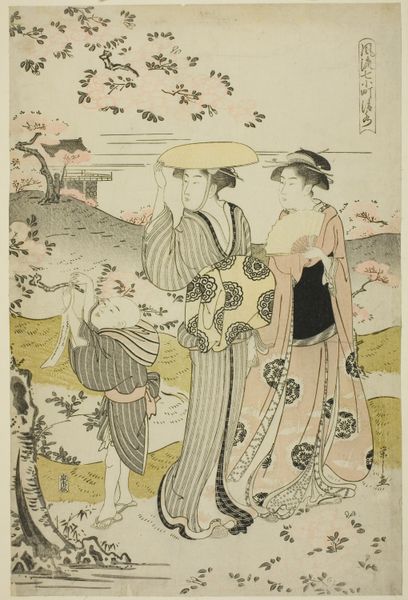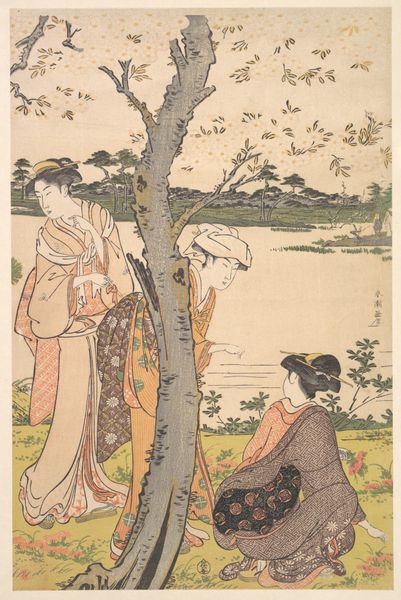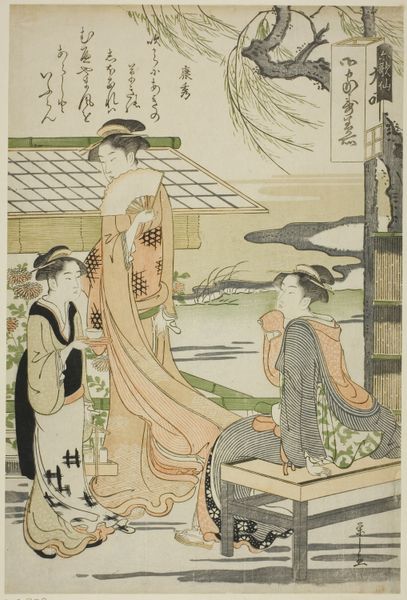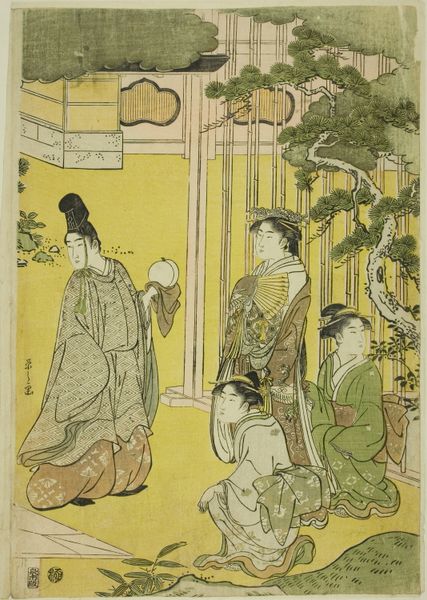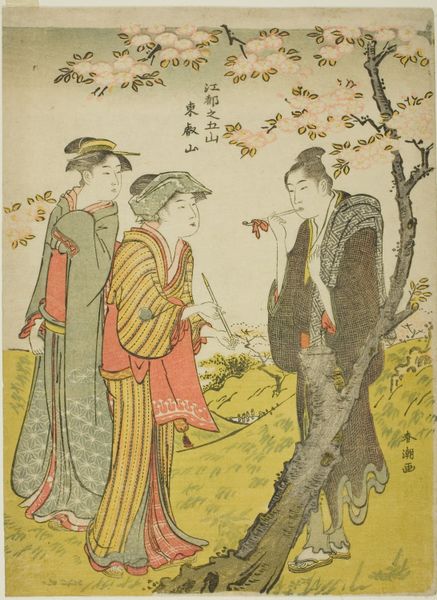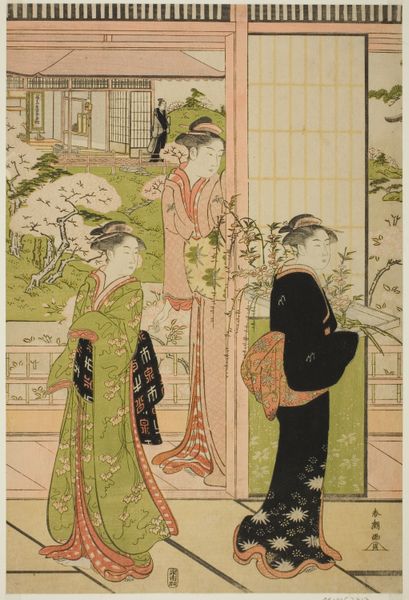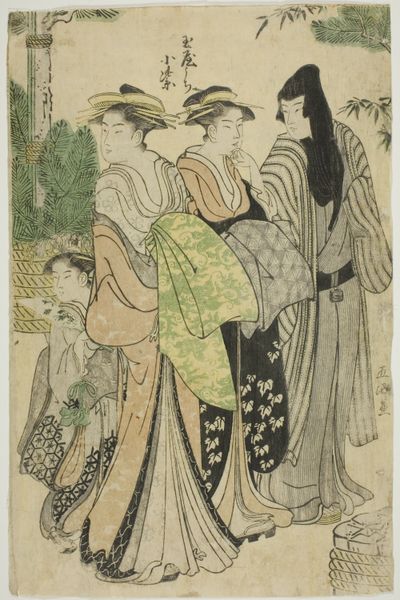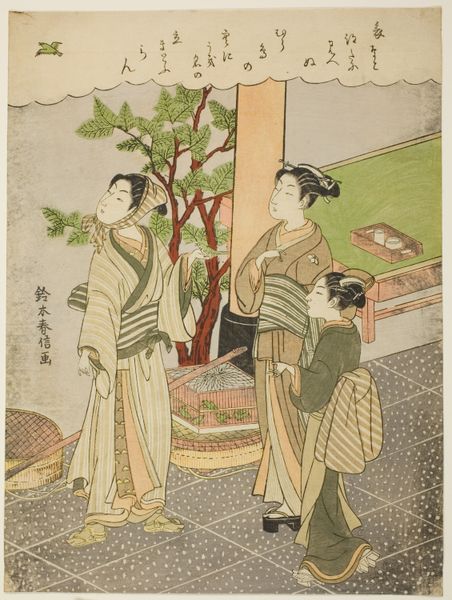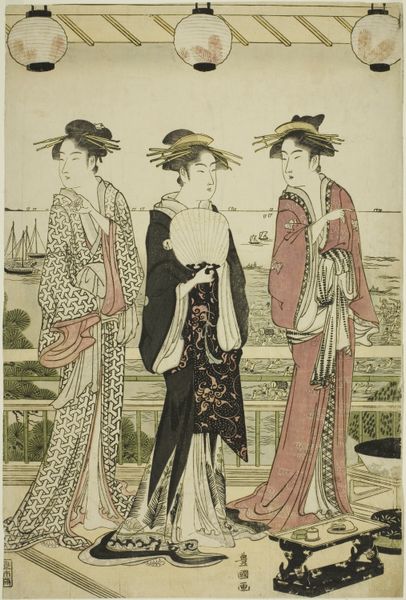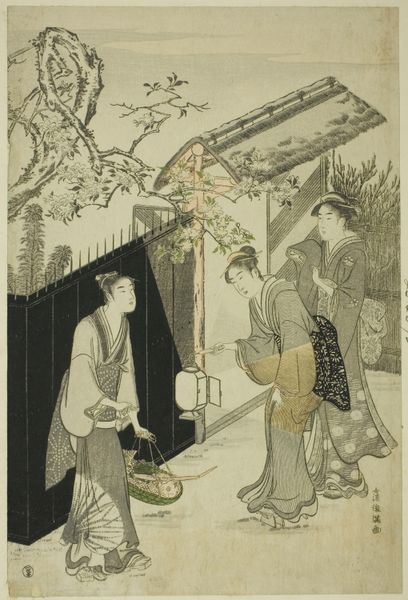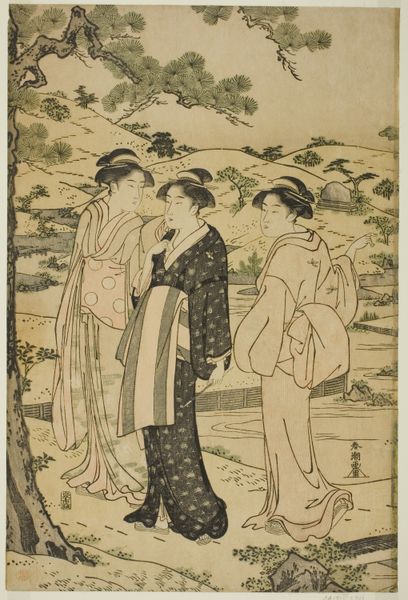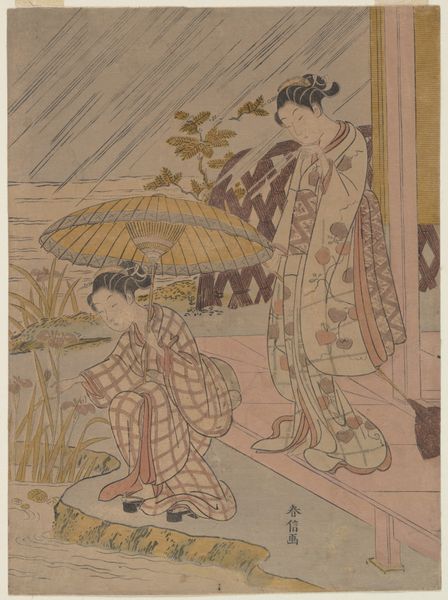
print, woodblock-print
# print
#
asian-art
#
landscape
#
ukiyo-e
#
japan
#
woodblock-print
#
genre-painting
Dimensions: 15 1/4 × 10 1/16 in.
Copyright: Public Domain
Kubo Shunman created this woodblock print, 'Viewing Votive Plaques at Mukojima,' in Japan in the late 18th or early 19th century. The image depicts a group of people visiting a shrine to view votive plaques, wooden tablets inscribed with prayers or wishes. This print offers a window into the cultural and religious practices of Edo-period Japan. Votive plaques were a common way for people to express their devotion and seek blessings from the gods. Mukojima, a popular pleasure district in Edo, now Tokyo, was known for its temples and shrines, making it a natural destination for such activities. Shunman's work, like many ukiyo-e prints, catered to a growing urban audience interested in depictions of everyday life, leisure, and popular culture. The print’s composition and attention to detail allows us to consider the social dynamics of the time. Costumes, hairstyles, and interactions between figures convey a sense of social hierarchy and gender roles. To fully understand this print, a historian could consult contemporary guidebooks, religious texts, and social histories of the Edo period. The meaning of art is always contingent on its social and institutional context.
Comments
No comments
Be the first to comment and join the conversation on the ultimate creative platform.

